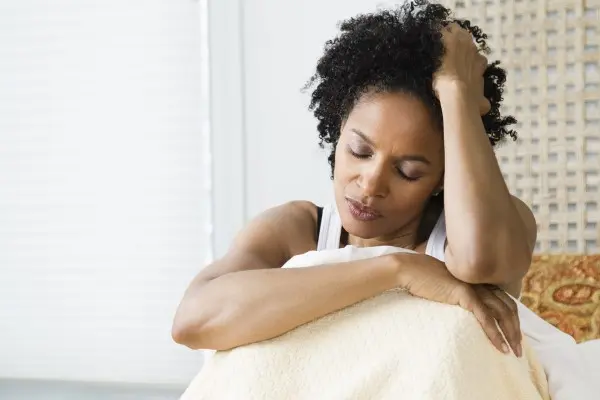In adults, migraine attacks can be divided into several phases. Although not everyone goes through all of these.
Phases of a Migraine
Premonitory stage – During this stage people can feel a variety of physical and mental changes such as tiredness, craving certain types of foods, mood changes, feeling thirsty, neck stiffness and frequent yawning. These feelings can last up to a day.
Aura – Around 1/3 of people with migraines may go through this stage. Aura occurs due to a spontaneous, slow-moving wave that passes over the surface of the brain temporarily affecting the functioning of the parts it travels over. His associated symptoms depend on which parts of the brain are affected.
The Headache (main attack stage) – This stage involves head pain, which can be extremely severe. The headache is typically throbbing, and made worse by movement, light or sound. The headache is usually on one side of the head but can be on both sides, or all over the head. Sickness and vomiting can happen at this stage. This stage can last up to 3 days.
Resolution – Most attacks slowly fade away, but some stop suddenly. Sleep seems to help many people. Even an hour or two of sleep can be enough to end an attack.
Recovery – This is the final stage of an attack which can best be described as a ‘hangover’ type feeling. This feeling can take days to disappear. Symptoms can often mirror the premonitory stage. For example, if a person lost their appetite at the beginning of the attack, they might be very hungry now.
Types of Migraine
There are different types of migraine, but not everyone will have ‘typical’ migraine. Although, a migraine without aura is the most common, about 1 in 3 people who suffer from migraines may experience a migraine with aura.
Migraine Symptoms:
Aura Symptoms:
People who have a migraine with aura can have the following symptoms which develop over about 5 minutes and last for up to an hour.
Visual disturbances (blind spots, seeing coloured spots or lines, seeing flashing or flickering lights, seeing zig zag patterns, temporary blindness)
Numbness or tingling like pins and needles in parts of your body
Muscle weakness
Feeling dizzy or off balance
Common Migraine Symptoms:
A headache that is usually on one side of your head. This is often a throbbing pain. It will worsen when you move, such as if you walk or climb the stairs. It is so severe that it means you can’t do your normal daily activities.
Feeling sick (nausea) or being sick (vomiting).
Being sensitive to light (photophobia), sound (phonophobia) and/or smells.
Migraines usually last between 2 hours and 3 days, with some symptoms (such as feeling very tired) starting up to 2 days before the head pain starts and finishing after the headache stops.
The information on this page Is not designed to aid in a diagnosis. If you are getting regular headaches or other symptoms that you suspect might be a migraine, please contact your GP.

TIPS
Get some useful tips to help prevent a migraine attack.

BUYING MIGRALEVE™
Find your nearest stockist of Migraleve products.

TRIGGER DIARY
Want to find out what triggers your migraines?



